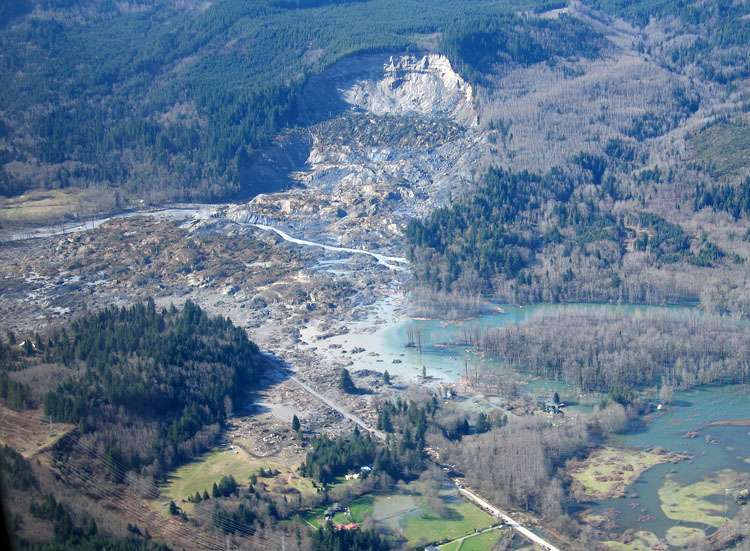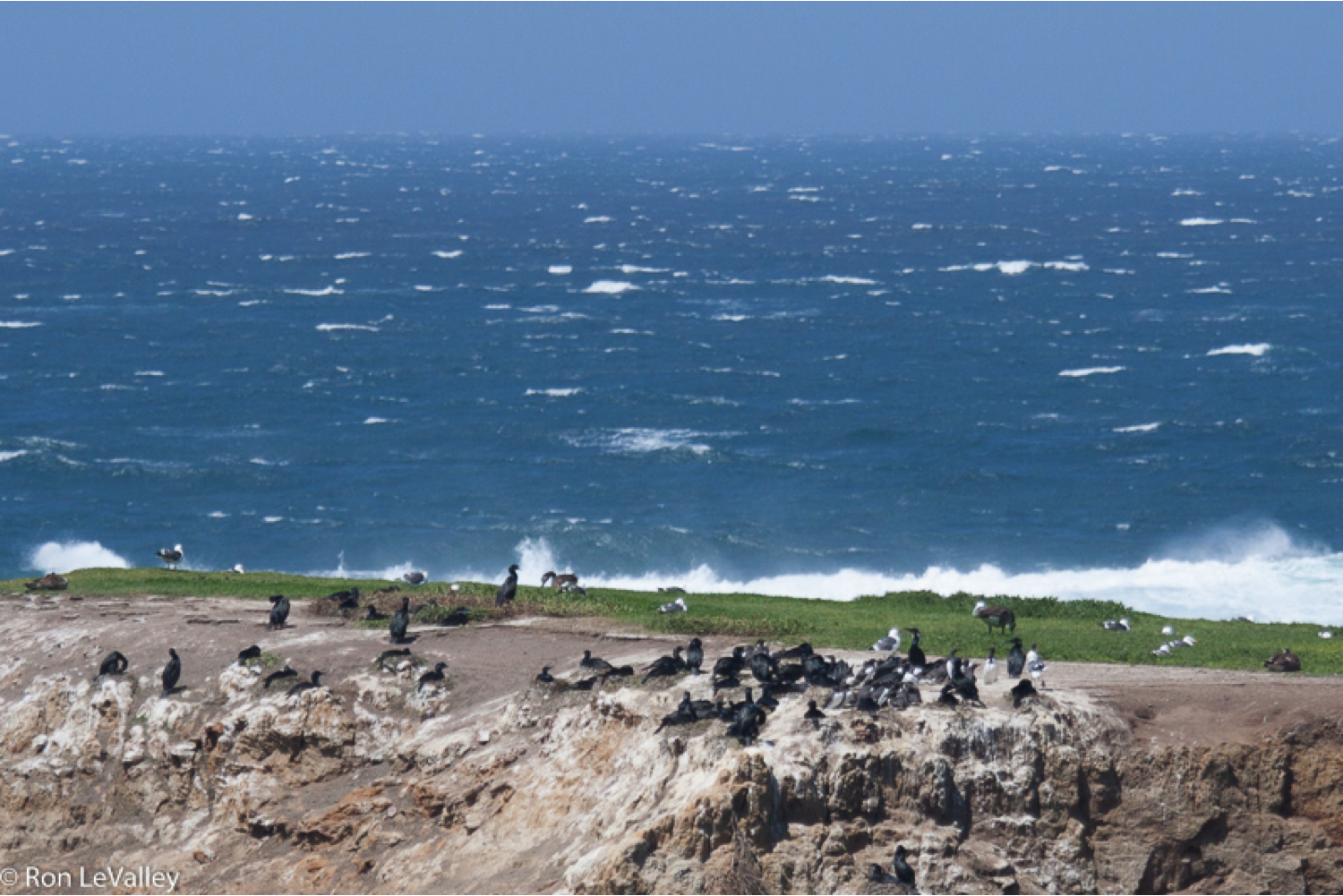Climate change is complex, no doubt about it. Much of that complexity lies in the interconnectedness of our world, where scientists are continually striving to increase our understanding of how natural systems function and may be affected with the ripple effects associated with a changing climate. Sharpening our understanding helps us better predict what the future holds. In a recent paper published in Science, College of the Environment’s Oceanography associate professor Curtis Deutsch talks about a new link in the climate change story, and how it may play out in terms of the oxygen depleted zones of our oceans.
Read more at UW Today »Oso disaster had its roots in earlier landslides
An interdisciplinary team of risk analysis experts, engineers, and scientists — including Earth and Spaces Sciences’ David Montgomery — released a report on Tuesday offering details about the Oso landslide that happened earlier this year. The report focuses on observations and data collection where the landslide occurred, reviews nearby geologic conditions and land-use and landslide risk assessments, and collects eyewitness accounts of the disaster.
Read more at UW Today »Geophysicists prep for massive ‘ultrasound’ of Mount St. Helens
Scientists are gearing up to get started in earnest this weekend on a massive collaborative effort to map the internal plumbing of Mount St. Helens. The College of the Environment’s Department of Earth and Space Sciences is playing a major role–lead by professor Kenneth Creager–along with numerous other institutions. The researcher’s goal is to better understand the inner workings of the mountain and other volcanoes in the Cascade Range as in order to better protect nearby urban areas.
Read more at UW Today »Ocean upwelling becoming more intense with a changing climate
Our Washington coastline is one of the most prolific and productive in the world, teeming with abundant plant and animal life. In fact, much of entire U.S. west coast is the same, and we can largely thank a strong upwelling system for driving this bounty. New research published in Science has shown that upwelling in the eastern boundary current systems – meaning, the eastern edges of ocean basins across the globe where winds, currents, and geological formations create a prime environment for upwelling – has increased globally over the past 60 years.
Read more on the Los Angeles Times »Scientists ready to study magma formation beneath Mount St. Helens
University and government scientists are embarking on a collaborative research expedition to improve volcanic eruption forecasting by learning more about how a deep-underground feeder system creates and supplies magma to Mount St. Helens. They hope the research will produce science that will lead to better understanding of eruptions, which in turn could lead to greater public safety.
Read more at UW Today »





